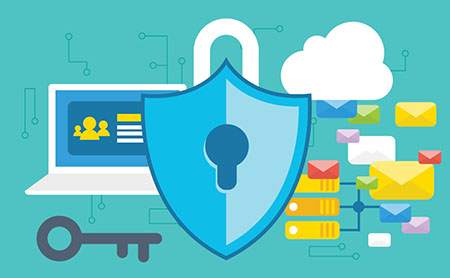BEST PRACTICES AROUND SOCIAL MEDIA SAFETY

With the emergence of new technologies and the access students now have to the Internet, it’s no surprise that social media safety has become a more pressing issue, both in and out of schools. According to a 2014 Pew Research Center study, 3 in 5 responding students reported being harassed on a social media platform, 1 in 4 witnessed someone being physically threatened, and 1 in 11 were stalked on social media. Most students have no idea what their online rights are and are reticent to let a teacher or parent know when they’re facing challenges online.
What steps can we take to help protect students when they’re using social media?
THE BEST DEFENSE IS A GOOD OFFENSE
While students use social media regularly, the appropriate parameters for these interactions aren’t intuitive. Teachers and parents need to have intentional conversations with kids about social media. When, for example, is it appropriate to post? Should you friend or connect with anyone who asks? How do you protect access to your accounts so they’re not public? There are no right or wrong answers to these questions, but educators need to consider these kinds of issues when they’re developing policies for social media use at school. They’re also questions that parents should discuss openly with their children. Conversations about social media provide adults with significant teachable moments regarding how to treat others with respect and kindness.
DIGITAL FOOTPRINTS
Schools need to cover the topic of digital footprints and the permanency of online content every year with students. Sites like Common Sense Media provide well-designed lessons for students as well as resources for parents who want to discuss social media topics with their children. Developing students’ media literacy skills is important. The reason for educating them about the harm that can exist online is not to scare them but to give them a framework for thinking about how to use social media safely and wisely.
FILTER, FILTER, FILTER
Thanks to the Children’s Internet Protection Act of 2000 and its 2011 expansion, districts have been both savvy and proactive about putting filters in place to protect students while they’re at school. Unfortunately, most parents are unaware of the filtering options that their Internet service providers offer. MSN, Yahoo, Google, Chrome, Safari, and Firefox all have controls that parents can set to limit access to social media, specific content categories, and more. Setting filters to block inappropriate content might not catch all undesirable sites or social media content, but this precaution does provide another layer of protection from harmful materials.
THE WORLD OF SEXTING
Sexting is the unofficial term for sending nude or nearly nude images, and when it involves children under 18 years of age it’s illegal. Texting has also increased, with more and more students using phones to quickly message one another. In addition, conversations can take place and images can be shared via social media sites, games, and even chat rooms—so even seemingly safe sites can now be a forum for students to sext.
Setting strong filters in schools will not prevent all inappropriate texting or sexting, so schools need to set straightforward guidelines for behavior, and rules or contracts should clearly spell out expectations for student technology use, including social media. Parents also need to set their own rules and monitor phones, tablets, and computers regularly to look for inappropriate content.
CLOSING THOUGHTS
Students today are growing up in the world of social media. Teaching students about their digital footprints, talking with them about appropriate social media use, and having strong filters in place as an additional layer of protection are all important steps that adults need to take—in school and at home. Social media has great potential for communication and learning when students know how to use it responsibly.
Dr. Lisa Gonzales, Assistant Superintendent in the Dublin (CA) Unified School District, is President Elect of the Association of California School Administrators and a member of California’s Technology Information Center for Administrative Leadership (TICAL). She was selected by the US Department of Education as one of 100 #FutureReady Superintendents.
Tech & Learning Newsletter
Tools and ideas to transform education. Sign up below.
Dr. Lisa Gonzales is Chief Business Officer in the Mt Diablo Unified School District in California and ACSA’s 2022 Business Leader of the Year.











